The Original Prusa XL was revealed way, way back at Formnext 2021 in Frankfurt, Germany, and suffered from repeated delays before finally launching in March 2023. Rollout is slow, however, with only single-toolhead units shipping at the time of writing. Manufacturer Prusa Research expects multi-toolhead systems to begin shipping two months after the single-toolhead version following further testing — any day now.
Before the XL’s release, the company staved off starving eyes by providing a ton of information about the new hardware. So much information, in fact, that we had to do a terrible injustice and take swift, broad strokes while summarizing the machine in our article about the reveal. Our Prusa XL spec review added some detail, but there’s still a lot to be said – and that’s why we’re here.
A standout component of the Original Prusa XL is the “Nextruder”, an advanced direct extruder Prusa Research revealed with the XL, and has since appeared on the Original Prusa MK4.
Details about the Nextruder trickled in through every update about the Original Prusa XL that its manufacturer shared, including the original reveal blog, a dev diary, and subsequent blog updates. The extruder was also discussed in depth during a Prusa Live livestream where Josef Průša, Prusa Research’s founder and CEO, and Nathan Dodd, a Senior Hardware Developer at Prusa Research and lead developer of the Nextruder, answered more questions.
To keep things simple, we’ve collected what we know about the Nextruder in this deep dive.
Proprietary Load Cell
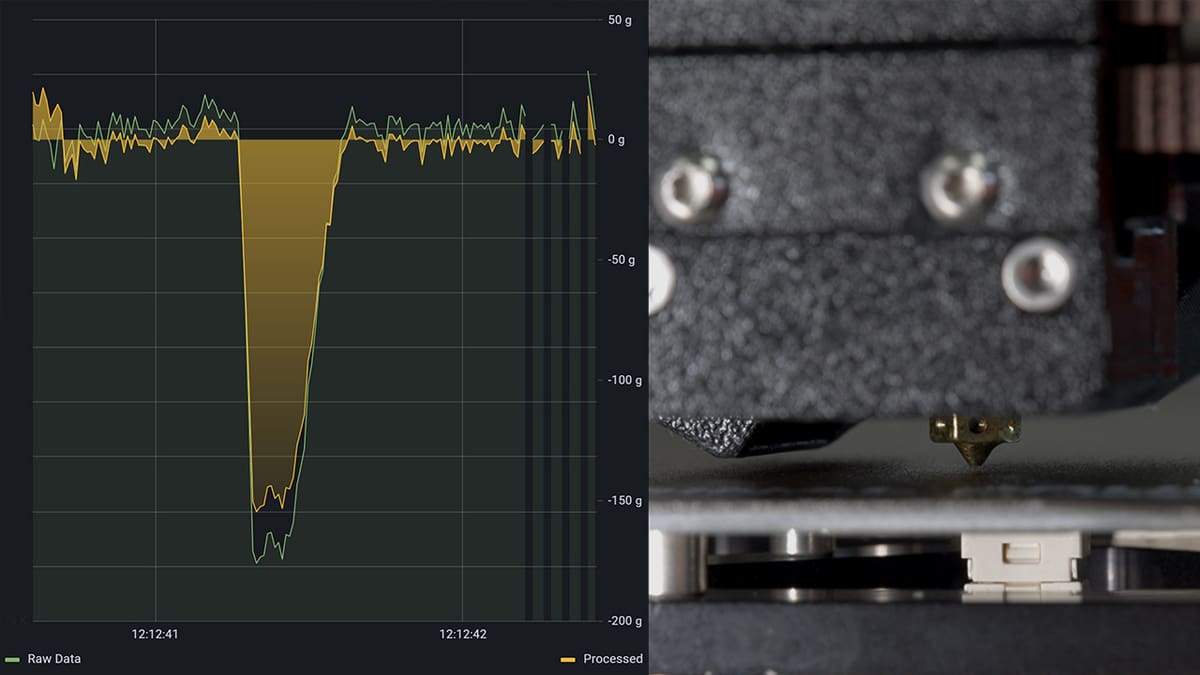
The component that brings the most functionality to the Nextruder is likely its load cell sensor, which collects an exciting amount of data for the Prusa XL to use in a number of ways:
Height Calibration
First and foremost, Prusa pitches the Nextruder as delivering “an always-perfect first layer.” In our time with the Nextruder on the MK4, we were given no reason to doubt this.
Perfect first layers are delivered through the load cell sensor’s height calibration function. The sensor is embedded in a single-piece heatsink where it measures force with analog readings, allowing the nozzle to probe the print bed (and more) for calibration. This calculation is so accurate that Dodd said it will “absolutely” work with smooth PEI sheets without damaging the print bed material.
Because it’s a nozzle probe, there’s no need to set new offsets if you’ve swapped a nozzle out — it should still be accurate. Prusa says, “it simply works every time”.
Spaghetti & Jam Detection
The load cell sensor provides so much information, in fact, that it can even reveal what you’re printing. “We could, just by the save data, reconstruct the model we printed,” said Průša.
Two larger implications of that come in the form of detection: jams and failed prints.
Insofar as jams are concerned, Prusa confirmed in its XL first look blog article that the Nextruder can recognize a jam and pause prints when one is detected, giving users time to clear the clog and continue their print. The company wants to take this feature a step further and detect partial jams to give users the opportunity to clear them before any issues manifest, but there hasn’t been an indication of whether that’s implemented just yet — the company has said it’s something it wants to focus on in the future.
Regarding failed print detection (especially in the form of spaghetti), Prusa’s load cell sensor is presenting a new option. Right now, failed prints are mostly detected with camera-based solutions like Spaghetti Detective, which uses machine learning to visually identify failures like loosely extruded filament — commonly referred to as “spaghetti”. These systems can be highly effective but, due to the nature of visual detection, can identify failures rather late and have hardware requirements that can be a tall order (a dedicated PC in the case of Spaghetti Detective).
Dodd lightly confirmed the Nextruder’s ability to detect failures via the load cell sensor in Prusa’s livestream saying, “we have to leave some things secret but yeah, it’s very detectable.” Speculatively, the data from a load cell, unlike automated visual detection, could very rapidly identify failures and provide users with an analog data record that could potentially be referenced to edit G-code and continue the print where failure began. There’s a chance this sort of process could even be automated à la power loss recovery, but that may be a tall order.
Dirty Nozzle Detection
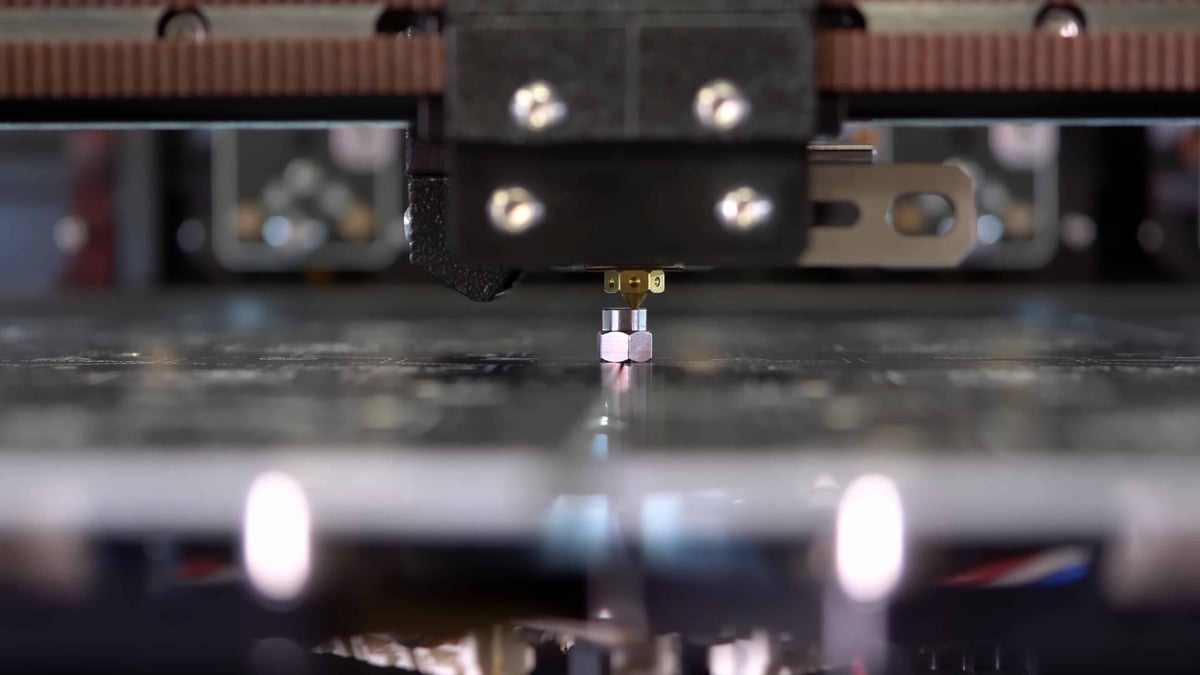
One persistent problem with nozzle probes is dirty nozzles and surfaces. If you have hardened plastic on your nozzle or the surface that you’re probing you won’t get a clean reading. Dodd mentioned that it helps, of course, to clean the nozzle (we know you won’t), but also that the sensor is advanced enough to detect when a nozzle is dirty. That means, presumably, it can self-correct or at least fire off a warning. It seems like the printer will probe more and in randomized locations if it gets an inconsistent reading to ensure accurate results.
Prusa Research added in the livestream that users will only need to run the alignment when a nozzle or tool has been changed – not before every print. It has also mentioned pre-print mesh leveling, though, specifying that the printer will only probe your print area. So, no tedious full-bed meshes for a single tabletop miniature.
Wipeless Material Changing
In its March dev diary, Prusa Research said it’s working to eliminate wiping after material changes on the XL and that the results look promising. This includes towers, wipe-to-infill, or any sort of container — it wants to “avoid a solution that would require dropping any sort of debris”.
Prusa didn’t say that this feature is made possible by the Nextruder’s load cell sensor but attributes it to “hardware-based advantages of the new extruder with advanced software tweaks”. Given what we know about the load cell sensor and its ability to report material flow so accurately, we’re guessing the feature is due to this sensor — at least in significant part.

Dedicated CPU
All that functionality comes with a lot of data processing. The load cell is far from the end of it: Nextruders on the Original Prusa XL also feature an accelerometer to gauge movement and vibrations. There’s so much data for the XL’s print head that it has its own dedicated CPU on an internal mainboard called the “Dwarf” board. Prusa really took its time winding up before flying past those 8-bit boards of yesteryear.
One neat Dwarf board feature mentioned in Prusa’s second XL Update is two programmable buttons. Nothing jaw-dropping, to be sure, but convenient! Prusa says it’s been using the buttons to quickly extrude and retract, but that they can be programmed to do anything you want. There’s also a status light here, so you can tell at a glance if one of the many sensors has picked up on a problem with the Nextruder.
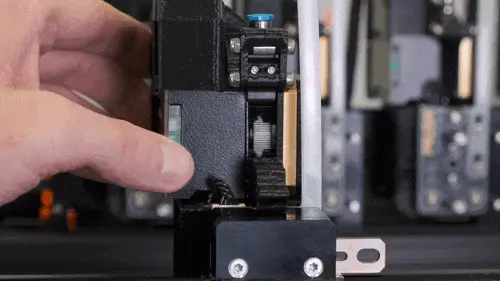
We’d hazard a guess that the extra silicon here boded poorly for the production of Prusa XLs amid the ongoing global supply crisis (on top of confirmed supply difficulties for parts like Hall sensors). Průša even mentioned in the Nextruder livestream that the company has found it was bidding against itself for the same lot of components. The issue was repeated in a later blog article. The shortages culminated in repeated delays to the XL.
The difficulty in acquiring these parts is also the reason Prusa’s open-source policy has a caveat this time around, Průša said. Though the Original Prusa XL and Nextruder will be released open source, details won’t be made public until the supply chain crisis has subsided to prevent would-be clones from bidding on the same hardware.

1:10 Planetary Gearbox
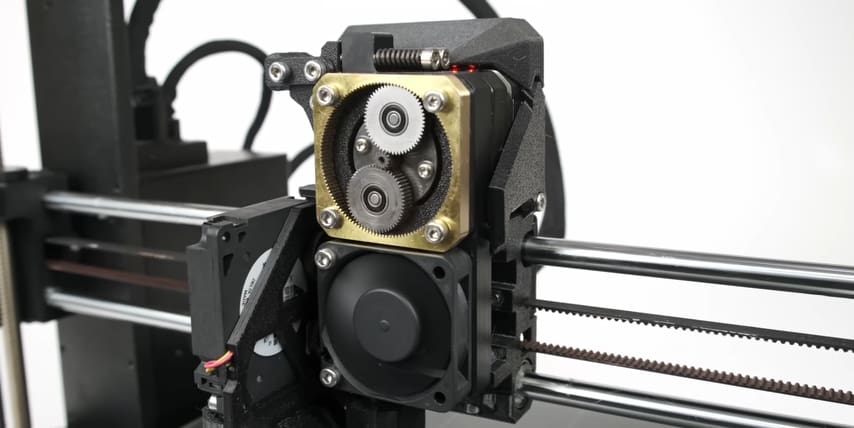
Prusa Research has made a point of highlighting its new extruder’s gearbox — now in two different versions.
The first gearbox was a zero-backlash 20:1 ratio cycloidal system, and the company made no small fair about that zero-backlash. Unfortunately, in Prusa’s first development update, it said difficulties in large-scale production forced them to pivot from the planned gearbox and go with a 1:10 gear ratio planetary gearbox. The company owned that its new planetary gearbox has “a negligible backlash”, but attests to improved quality due to more consistent extrusion.
So what exactly are we missing with that zero-backlash gearbox gone? And why might it matter?
Simply put, “backlash” is the empty space between gear teeth. Some backlash is typically required in gears to account for manufacturing tolerances (how precise a given manufacturing process can be). Without backlash, a gear’s teeth may grind together during operation and create a myriad of issues including jams or damage. But there’s a trade: the space between teeth also allows for lost motion. When you’re trying to get as much torque as you can out of a small box, that’s no good.
There are other potential tradeoffs to cycloidal gearbox designs, though, and that might account for the improved performance with a planetary gearbox that Prusa is claiming. After the XL’s initial reveal, MihaiDesigns pointed out in his highly-detailed Prusa XL impressions video that vibrations could pose a problem for the cycloidal system and force users to print very slowly. Interestingly, Prusa mentioned speed in this update and how it’s still working towards finding the right balance. Hopefully the new gearbox has helped.

Custom E3D Nozzle
The Nextruder’s hot side has a custom “volcano-size” nozzle. Dodd noted that it doesn’t have the full volcano melt zone, however.
The nozzle was developed with E3D and bears a certain resemblance to the RapidChange Revo system, but Prusa has made clear that it’s different. Like the Revo, the Nextruder’s nozzle eliminates the need for hot-torquing — and hopefully clogging — but does so with a much longer filament guide on its single-piece heat break and nozzle, and threads into the heater block instead of past it.
It’s also different than the Revo in terms of swapping. The XL’s nozzle isn’t a “rapid-change” system, per se. Where the Revo’s nozzles are designed to toollessly unthread from the rest of the assembly, the Nextruder’s hot end assembly is held together with two screws, and the nozzles need a wrenching to separate from the heater block.
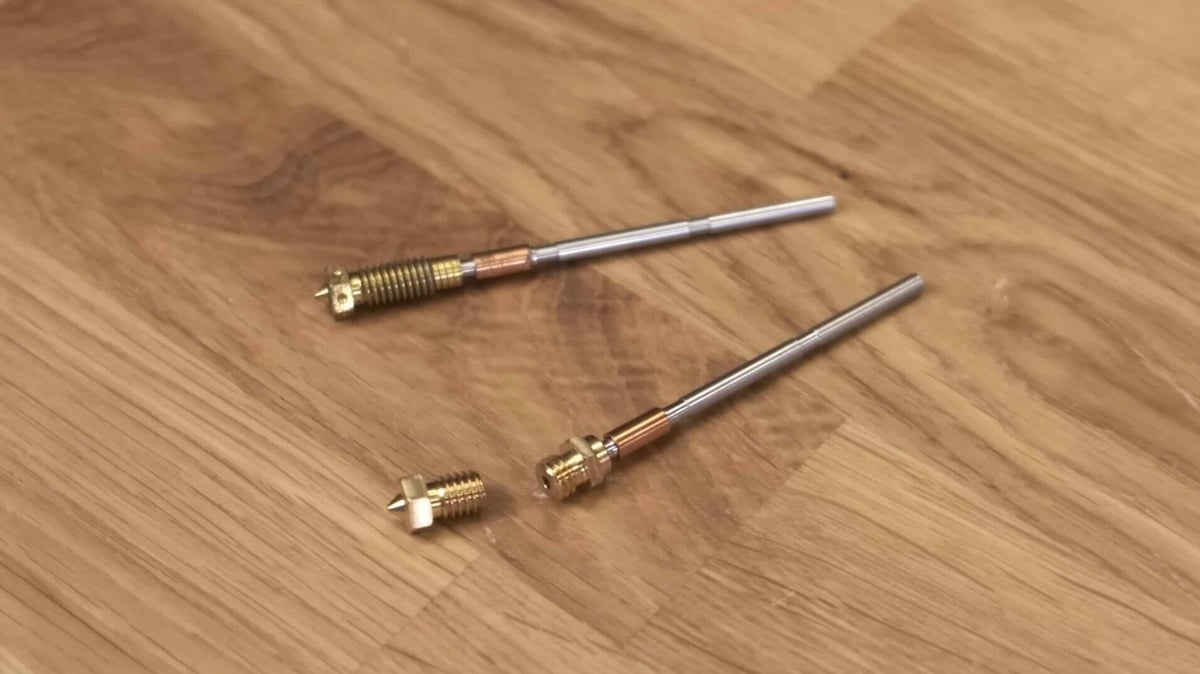
Oh, there’s also a neat little LED nozzle light. How fun!
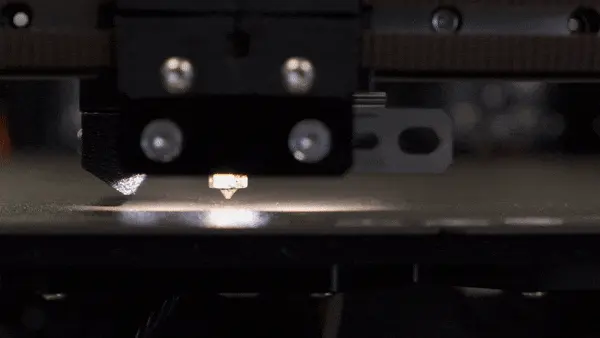

Heatbreak Thermistor
Some renewed effort has been put into monitoring potential heat creep in the Nextruder, with a second thermistor added to the heat break for extra input. It doesn’t seem like a totally necessary part but certainly is a useful monitoring and safety tool.
Dodd recited Prusa’s logic for the extra thermistor: “you only get it clogging in that heat break when the heat break is hot, so why not monitor it?”
During the Prusa Live livestream, it was pointed out that this new thermistor adds an extra failsafe in preventing thermal runaway. “If one fails we can find out that it failed,” Průša said, “because before we couldn’t.”
Beyond safety features, Dodd pointed out that a thermistor on the heat break will allow users to further tweak performance settings. If it’s vital for your material that the heat break remains totally cold, you’ll be able to see that it is. If you’d like a little pre-heating in the break to help run your prints faster you’ll be able to do that, too. This will likely be accomplished just by managing fan speeds, as Dodd also mentioned fan regulation as part of the new performance features and that, with a heat break thermistor, the fans will only be as loud as they need to be.

Cable Management
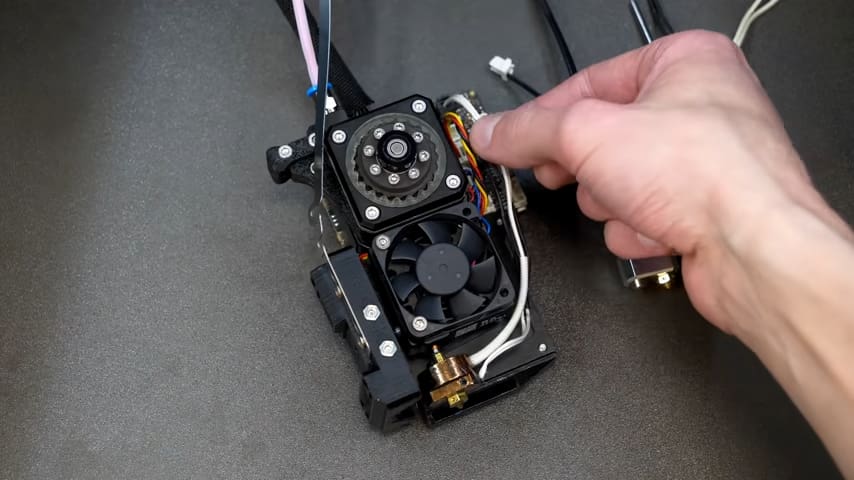
The Nextruder has a lot going on hardware-wise, and that could make modifications and maintenance an absolute nightmare if not handled correctly. Fortunately, Prusa has considered this and implemented some efficiencies and cable-management quirks to keep things tidy.
Probably the most noticeable, and most interesting, organizational solution Prusa has implemented is the Nextruder’s dedicated break-out board, the Dwarf board, that we mentioned previously. This might be obvious considering the extruder needs somewhere for its dedicated CPU, but it’s going to be a joy of a feature to have after the relative difficulty of detaching past Prusa hot ends. The board keeps things simple by connecting to the printer’s mainboard with a single cable, significantly simplifying disassembly and hopefully leaving our maintenance woes in the past.

Original Prusa MK4 Differences
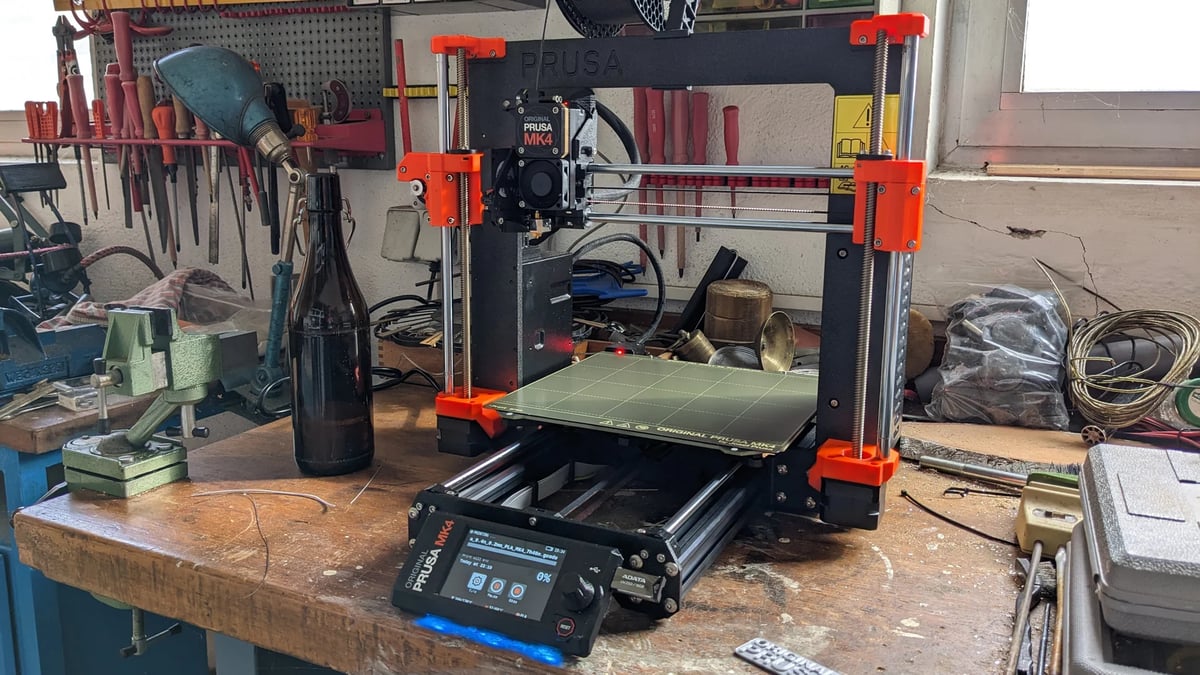
The Original Prusa MK4 was released in a surprise launch in late March and, like the XL, the included Nextruder is a standout feature.
The MK4’s implementation of the Nextruder differs somewhat from the XL. Most significantly, it lacks an integrated accelerometer and dedicated CPU. The XL Nextruder’s “Dwarf” control board has been replaced with a simpler “LoveBoard” breakout board since, without an accelerometer or more complicated processes like tool changing, the extra processor isn’t needed on this setup.
The tradeoff is that the MK4’s Nextruder is smaller and lighter than the XL’s, according to Prusa. Given that the company has previously said the Nextruder is 30% lighter than the MK3’s printhead, that’s one lightweight direct extruder.
What's Changed?
That’s already a lot of meaty info we’ve got, but it seems Prusa hasn’t revealed everything about the Nextruder just yet. Dodd was clear that he was being careful with his words while appearing on Prusa Live, and Průša mentioned there were some things they weren’t sharing pictures of yet. We’ll learn if there’s anything else interesting in the next few months, should the company stick to its latest March release schedule.
There are a few small confirmed, if imprecise, details remaining, like that we know the hot end is at least 30% lighter than the Mk3’s – but exactly how much hasn’t been shared. It’s a surprising detail nonetheless, considering everything crammed in the Nextruder could make up this whole article.
Have a question about Prusa Research’s Nextruder? A theory? Drop it in the comments below and we’ll consider looking into it for future updates.
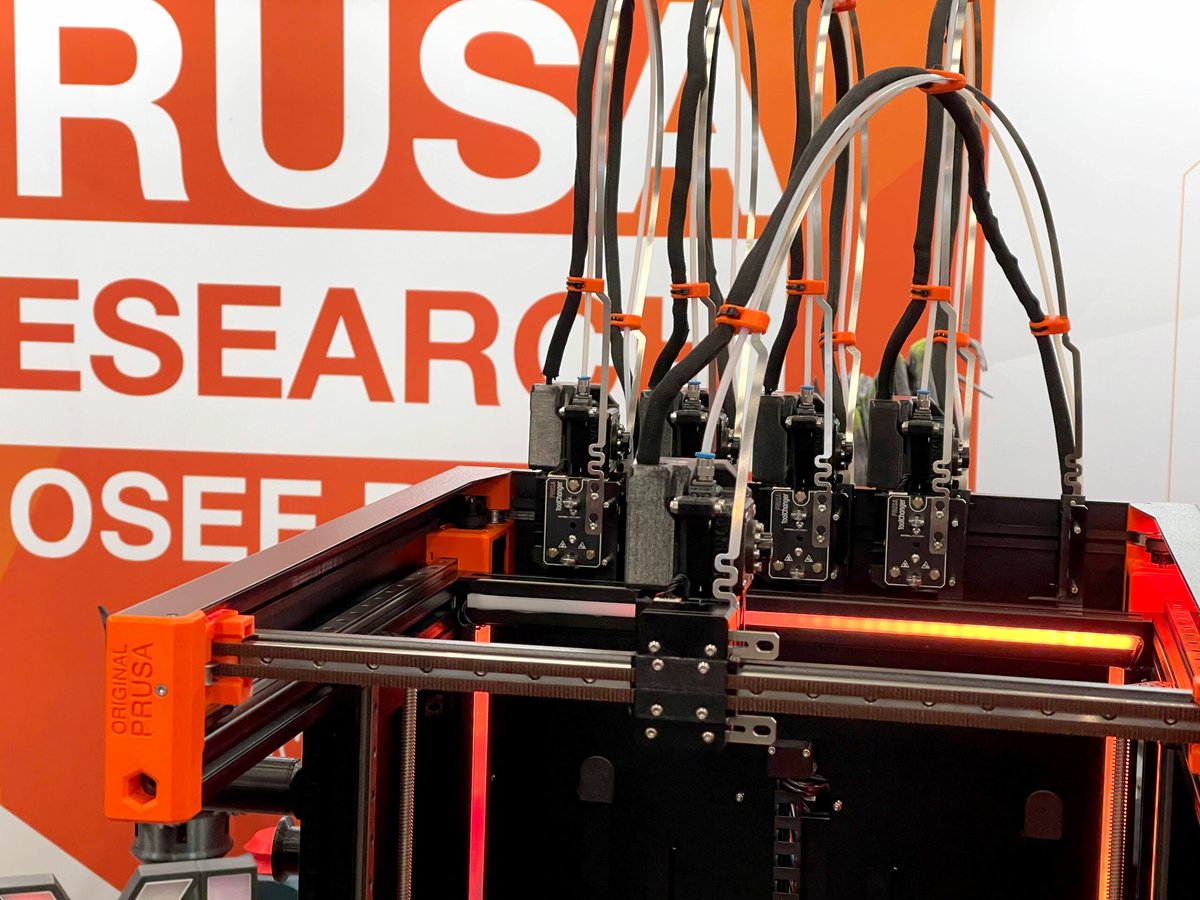
- Update — May 16, 2023: We dropped in to change some language now that the Original Prusa XL is released and the Nextruder is in makers’ hands. We also added a short section on the Original Prusa MK4 and the important differences between its Nextruder and the XL’s.
- Update — February 3, 2023: A new update announced another delay, with the single-toolhead Prusa XL’s release pushed back to March — multi-toolhead units will follow after further testing. We’d also passed over a second blog update from Prusa back in November that revealed a few more details, so we made sure to add those in.
- Update — August 11, 2022: Added new information from Prusa Research’s XL Update blog about its new planetary gearbox.
- Update — March 29, 2022: Added new information from Prusa Research’s dev diary about wipeless material changing efforts.
License: The text of "The Nextruder: Prusa XL Deep Dive" by All3DP Pro is licensed under a Creative Commons Attribution 4.0 International License.
CERTAIN CONTENT THAT APPEARS ON THIS SITE COMES FROM AMAZON. THIS CONTENT IS PROVIDED ‘AS IS’ AND IS SUBJECT TO CHANGE OR REMOVAL AT ANY TIME.


